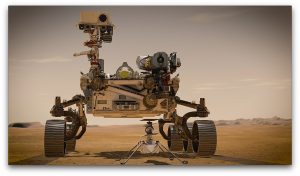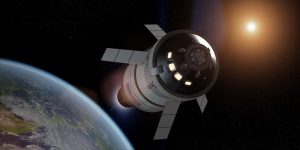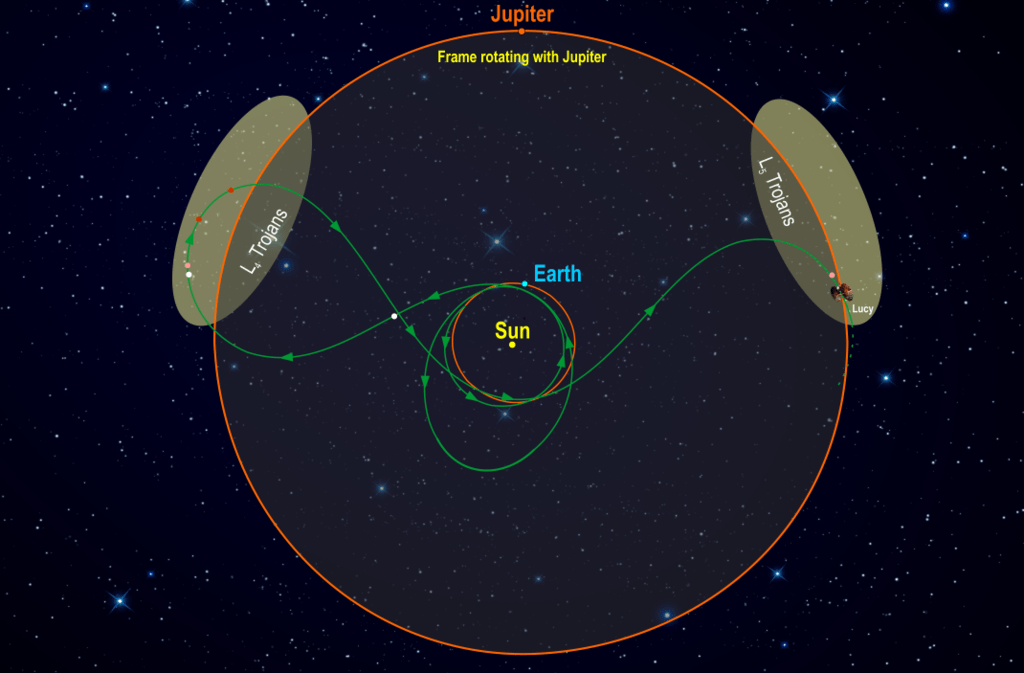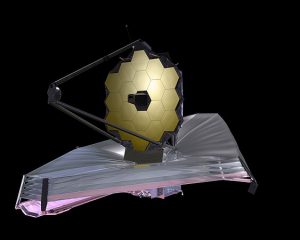2021 might be a difficult year here on Earth. But despite the global pandemic scientists and engineers work really hard to stay on schedule with the development and launch of the new space missions.
From smashing into an asteroid and landing on Mars to starting observations with the most powerful space telescope to date – these missions will soon contribute to our better understanding of the Cosmos. 2021, here we come!
🚀 Destination: Mars
The year will begin with a bunch of exciting arrivals to Mars. Not one, but three spacecraft are expected to reach the Red Planet in February 2021.

Artist’s illustration of Perseverance rover and Ingenuity helicopter; Image Credit: NASA/JPL-Caltech
NASA Perseverance rover, accompanied by the tiny helicopter Ingenuity, will touch down on Mars on February 18th. You can learn more about this amazing mission and its objectives in our Blog post Perseverance rover and what makes it so special. And, of course, don’t forget to join the virtual landing party on the 18th via NASA TV! Perseverance will be looking for the signs of the past microbial life on Mars, collecting samples for the future robotic missions to collect and even testing technology that will one day enable human exploration of Mars.
The United Arab Emirates’ Hope Orbiter- the first of the three missions to reach the Red Planet’s orbit – will be studying martian climate and weather. During its two-year mission Hope will try to answer the long standing question: why and how fast the planet is losing its atmospheric Hydrogen and Oxygen to space.
The Chinese Tianwen-1 spacecraft will also reach Mars in February. The spacecraft consists of several parts: an orbiter that will map the planet from above and a lander-rover combo that will make a detailed study of the surface once it lands on Utopia Planitia in May.
🚀 Destination: Moon
The Russian Space Agency Roscosmos is planning to send a lander to the Moon’s South Pole in October 2021. The spacecraft, Luna 25, will become the first in 45 years Russian mission to the Moon. Luna 25 is mainly a technology demonstration mission, though it will also study the lunar polar soil.

Illustration of Orion performing a trans-lunar injection burn; Image Credit: NASA
What about the NASA lunar program, Artemis? you may ask. Are we still planning to send humans to the Moon by 2024? Well…while the 2024 deadline might sound a bit too ambitious, the preparations are well underway! The first uncrewed flight of the Orion crew capsule atop the Space Launch System rocket – the configuration that will eventually take the astronauts to the Moon – is planned for November 2021.
🚀 Destination: Asteroid
The goal of the upcoming NASA Double Asteroid Redirection Test mission, or DART for short, is to check out the technology that may one day save our planet, no less!
We don’t yet have a foolproof plan on how to prevent an asteroid from crashing into the Earth. But we have several ideas of how it can be done. DART’s job will be to check if one of these ideas – redirecting an asteroid by deliberately crashing into it – will work. The 500 kg spacecraft, aided by the on-board cameras, will fly to the double asteroid Didymos and collide with its moonlet Dimorphos, causing the latter to slightly change its trajectory. If the mission is successful, we should be able to measure this change from Earth. DART is scheduled to launch in July 2021.
🚀 Destination: Jupiter Trojans
Another upcoming NASA mission, Lucy, is also about asteroids (though Lucy’s goal will be to study them, not to crash into).
The mission bears the name of the 3.2 million year old fossil skeleton ‘Lucy’ that was found in Ethiopia in 1974 by Donald Johansen and his student Tom Gray. Lucy the Australopithecus helped us learn more about the origin of humans. Lucy the spacecraft will hopefully shed some light on the origin of the Solar System. The robotic explorer will visit 1 asteroid in the Asteroid Belt and 7 Jupiter Trojans, that is the asteroids that are in the same orbit around the Sun as planet Jupiter. There are 2 groups of Trojans – one, leading, is 60 degrees ahead of Jupiter and another, trailing, is 60 degrees behind. The spacecraft’s complex trajectory will take Lucy past the asteroids from both groups. The 12 year long space mission will begin in October 2021.

Lucy’s orbital path (green); Image Credit: NASA
🚀 Destination: Earth’s Lagrange Point L2

Illustration of the James Webb Space Telescope; Image Credit: NASA
The one mission we’ve been waiting for so long, the James Webb Space Telescope (or JWST) will finally launch on October 31, 2021. The telescope will see the light from early galaxies, peer through the atmospheres of exoplanets, look at ‘stellar nurseries’ and black holes in the centres of galaxies and so much more!
You will find lots of information about the JWST in our post Answering the most popular questions about the James Webb Space Telescope.
🚀 Destination: International Space Station
Three expeditions will visit the ISS in 2021 though the exact dates are yet to be announced. This year the astronauts will use both Soyuz and SpaceX Crew vehicles to get to and from the station.
In addition to the new spacecraft, dozens of robotic explorers will continue their ongoing mission throughout 2021. Among them are Juno, BepiColombo and Parker Solar Probe. Good luck!
Questions? Comments? Let our Star Dome team know!

